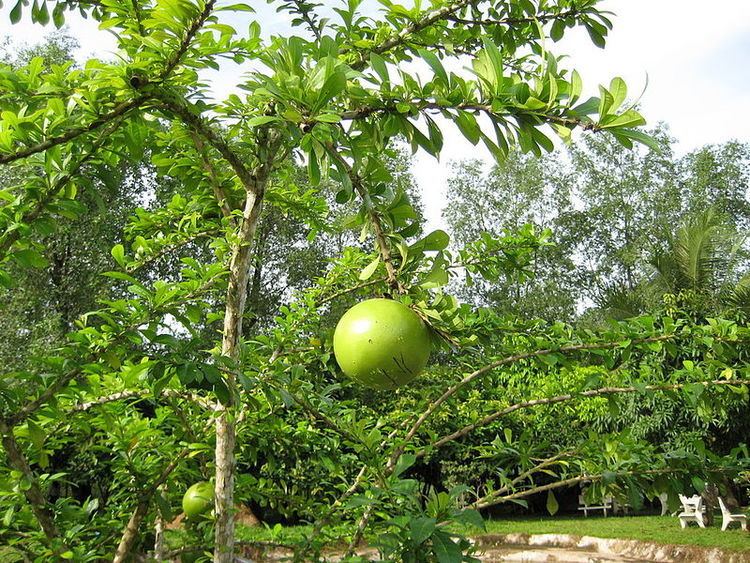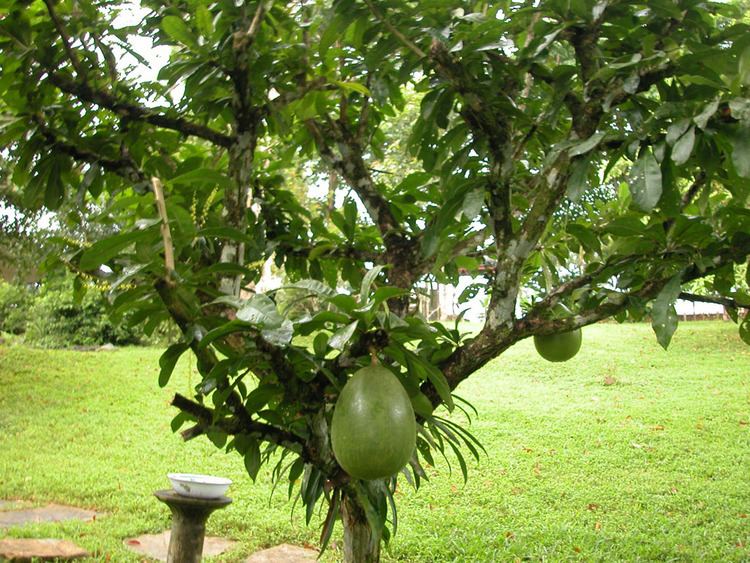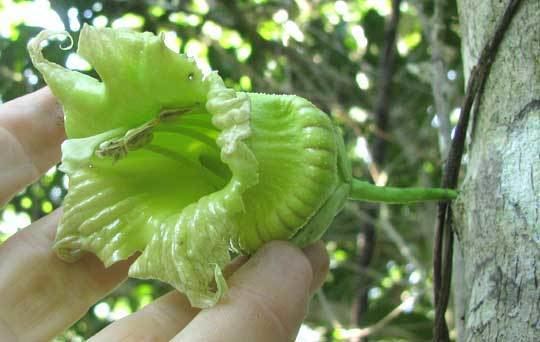Rank Species | Genus Crescentia Higher classification Crescentia | |
 | ||
Similar Crescentia, Bignoniaceae, Crescentia alata, Calabash, Indian bael | ||
Crescentia cujete beggar s bowl tree
Crescentia cujete, commonly known as the Calabash Tree, is species of flowering plant that is native to Central and South America. It is the national tree of St. Lucia. It is a dicotyledonous plant with simple leaves, which are alternate or in fascicles (clusters) on short shoots. It is naturalized in India.
Contents

It is also known as Calabacero (Spain), Cuité (Brazil) Totumo (Panama, Colombia, Venezuela and Peru), Tutumo (Bolivia), Taparo (Venezuela), Mate (Ecuador), Huinga (Peru), Pate (Peru), Cuyabra (Colombia), Jícaro (Mexico), Morro (Guatemala), Güira (Cuba), Cujete (Spain, Philippines), Miracle Fruit (Philippines), Kalbas (Dominica and St. Lucia), Higuera (Puerto Rico) and Rum tree (Sri Lanka).

The fruit, called Jícara, Bule, Tecomate, Guaje, Morro or Huacal in Mexico, is used to make small vessels for serving or drinking.

The tree shares its common name with that of the vine calabash, or bottle gourd, Lagenaria siceraria).
Calabash tree crescentia cujete
Uses

In the Philippines, Crescentia cujete is a popular folkloric medicine by local communities used as remedy for several illnesses. Its leaves are used for treating diarrhea, hypertension and stomach aches. Its fruit is used in treating respiratory illnesses like colds, cough,, asthma, and bronchitis. Calabash fruit is also believe to have laxative, anti-inflammatory and hypoglycaemic (blood-sugar lowering) effects. Because of its many (believed medicinal) uses, calabash fruit is regarded as miracle fruit in Southern Philippines.


